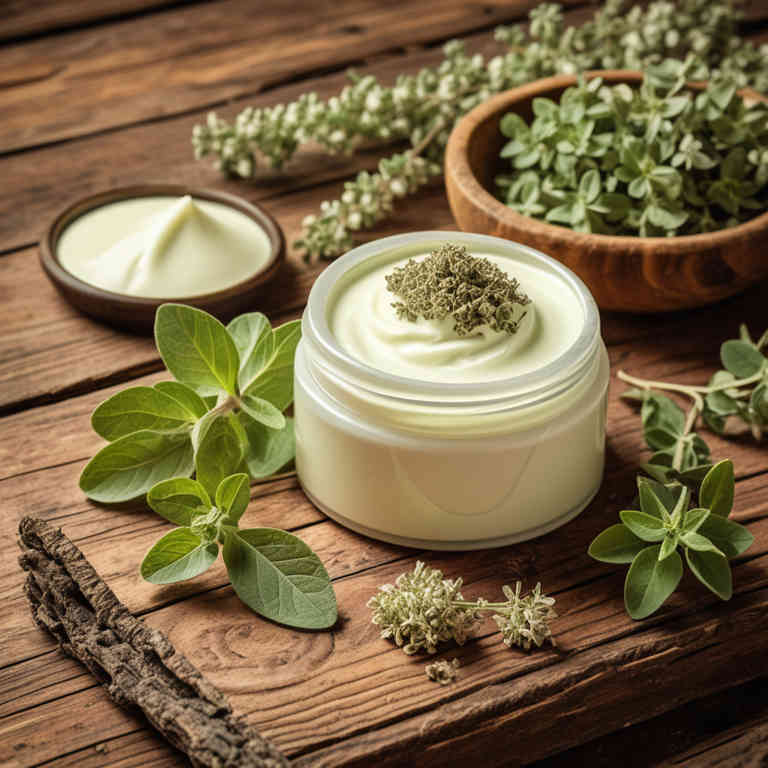Origanum vulgare cream for medicinal use

Origanum vulgare cream is a topical herbal preparation made from the dried leaves and flowers of the common oregano plant.
It is traditionally used in herbalism to treat skin conditions such as eczema, fungal infections, and minor wounds due to its antimicrobial and anti-inflammatory properties. The cream is often infused with a carrier oil like coconut or olive oil to enhance absorption and effectiveness. It is applied directly to the affected area as part of a holistic approach to healing.
This preparation is valued for its soothing and protective effects on the skin.
Uses
Origanum vulgare cream has been used to treat various skin conditions and inflammatory disorders for centuries.
Historically, it was valued in ancient Greek and Roman medicine for its antiseptic and anti-inflammatory properties. Traditional uses included applying the cream to wounds, rashes, and respiratory ailments due to its soothing and healing effects. In modern times, it is commonly used in skincare products for its ability to reduce redness and irritation.
Its continued popularity reflects both its historical significance and its validated therapeutic benefits in contemporary herbal medicine.
Benefits
Origanum vulgare cream has health benefits such as reducing inflammation, soothing skin irritations, and promoting wound healing.
This herbal preparation is derived from oregano, which contains potent antioxidants and antimicrobial compounds. It can help alleviate symptoms of eczema, psoriasis, and other skin conditions due to its anti-inflammatory properties. The essential oils in oregano also have a calming effect, making it useful for relieving minor burns and insect bites.
Overall, Origanum vulgare cream is a natural remedy that supports skin health and provides relief from various dermatological issues.
Constituents
Origanum vulgare cream active constituents include carvacrol, thymol, terpenes, and flavonoids.
These compounds possess antimicrobial, anti-inflammatory, and antioxidant properties. Carvacrol and thymol are primarily responsible for the cream’s ability to combat bacterial and fungal infections. Terpenes contribute to its soothing effects on the skin, while flavonoids enhance its protective benefits.
This herbal preparation is commonly used for treating skin conditions, reducing inflammation, and promoting overall skin health.
Preparation
To make Origanum vulgare cream, start by gathering fresh or dried oregano leaves and washing them thoroughly.
Next, blend the oregano with a small amount of water or a carrier oil like olive oil to create a paste. Then, strain the mixture through a fine mesh sieve to remove any solid particles, ensuring a smooth texture. Finally, mix the strained oregano oil with a base such as beeswax or a moisturizing cream to achieve the desired consistency.
This cream can be used topically for its soothing and aromatic properties.
Side Effects
Origanum vulgare cream may lead to skin irritation or allergic reactions in some individuals due to its essential oil content.
It is commonly used for its antimicrobial and anti-inflammatory properties, making it a popular choice for treating minor skin infections or inflammatory conditions. However, excessive use or application on sensitive skin can cause redness, itching, or a burning sensation. In rare cases, it may interact with certain medications or exacerbate existing skin conditions.
It is important to perform a patch test before using this cream regularly to minimize the risk of adverse effects.